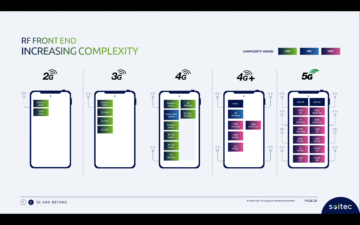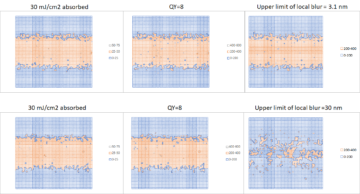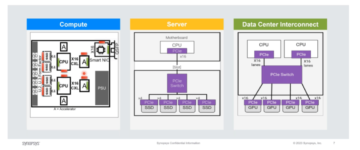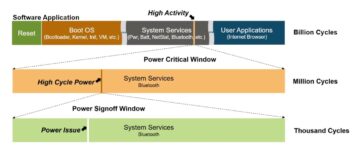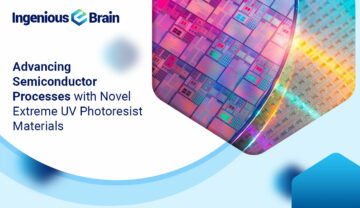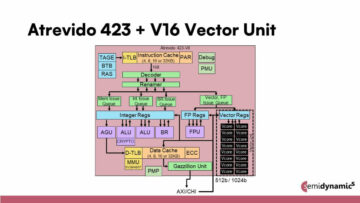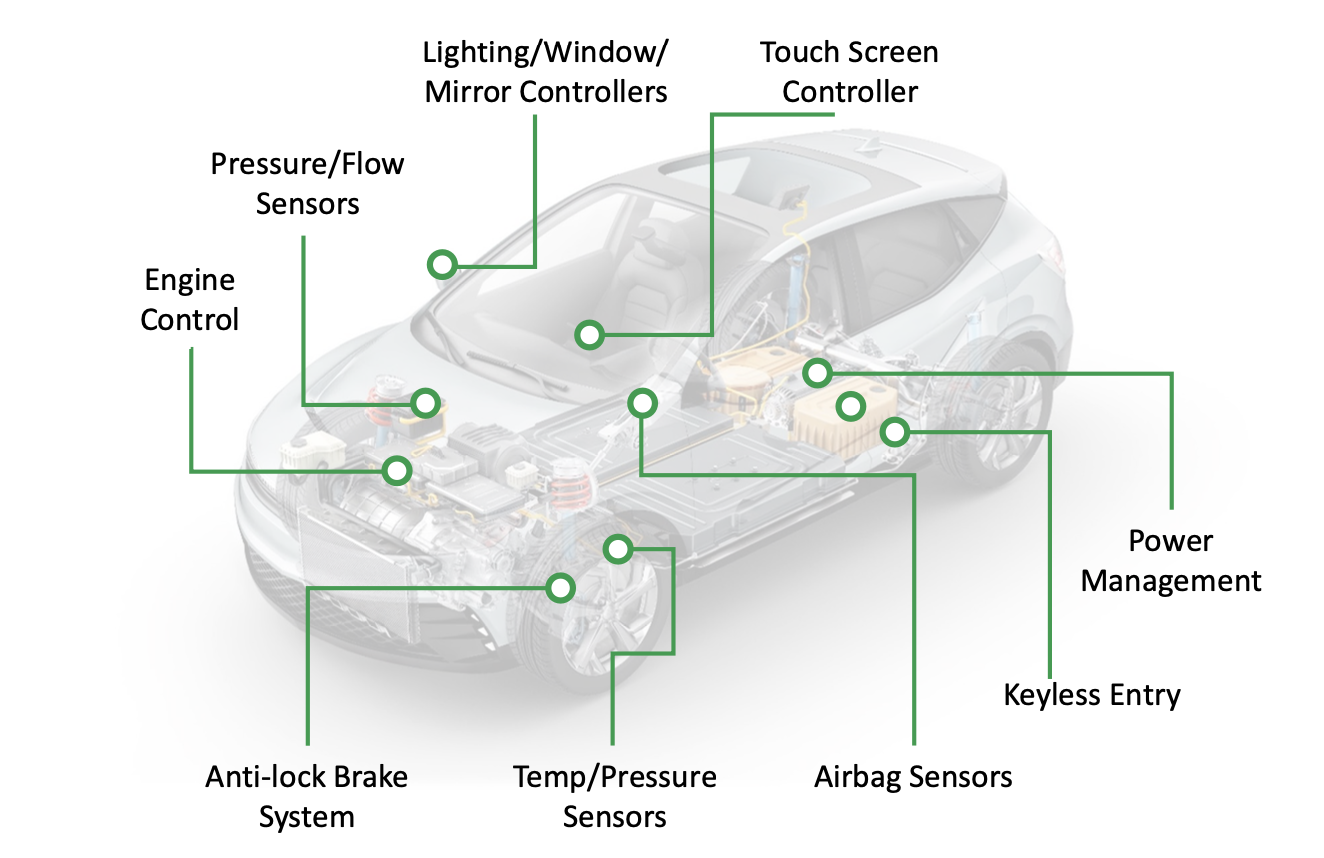
Non-volatile memory (NVM) is a critical building block for most electronic systems. The most popular NVM technology has traditionally been flash. As a discrete part, the technology can be delivered in various form factors. For embedded applications flash presents scaling challenges, however. A new NVM technology developed by Weebit Nano is called ReRAM. Sometimes called RRAM, this approach stores bits as resistance vs. the typical approach of using charge that is prevalent in other memory technologies. NVM is used in many parts of automotive systems, as shown in the diagram at the top of this post. The problem is automotive systems present many challenges around things like operating temperature, safety and reliability. Using ReRAM for embedded applications has been hampered by these hurdles, until recently. Read on to see how Weebit Nano brings ReRAM benefits to the automotive market.
Weebit Nano Opens Access to Automotive Applications
Back in November of last year, Weebit Nano announced that its ReRAM IP achieved high temperature qualification in SkyWater Technology’s 130nm CMOS (S130) process. The announcement detailed qualification up to 125 degrees Celsius – the temperature specified for Grade-1 automotive applications. This temperature range also opens up application for industrial, aerospace and other high-temp applications. You can read the details of the announcement here.
Last month, the company raised the bar on automotive access by detailing high reliability and endurance at extreme temperatures and after extensive cycling. Specifically, high endurance was demonstrated at 100K flash-equivalent cycles and high-temperature stability was demonstrated at 150 degrees Celsius lifetime operation, including cycling and retention. The details are shown in the image, below. This clearly moves ReRAM much closer to mainstream use in automotive applications.
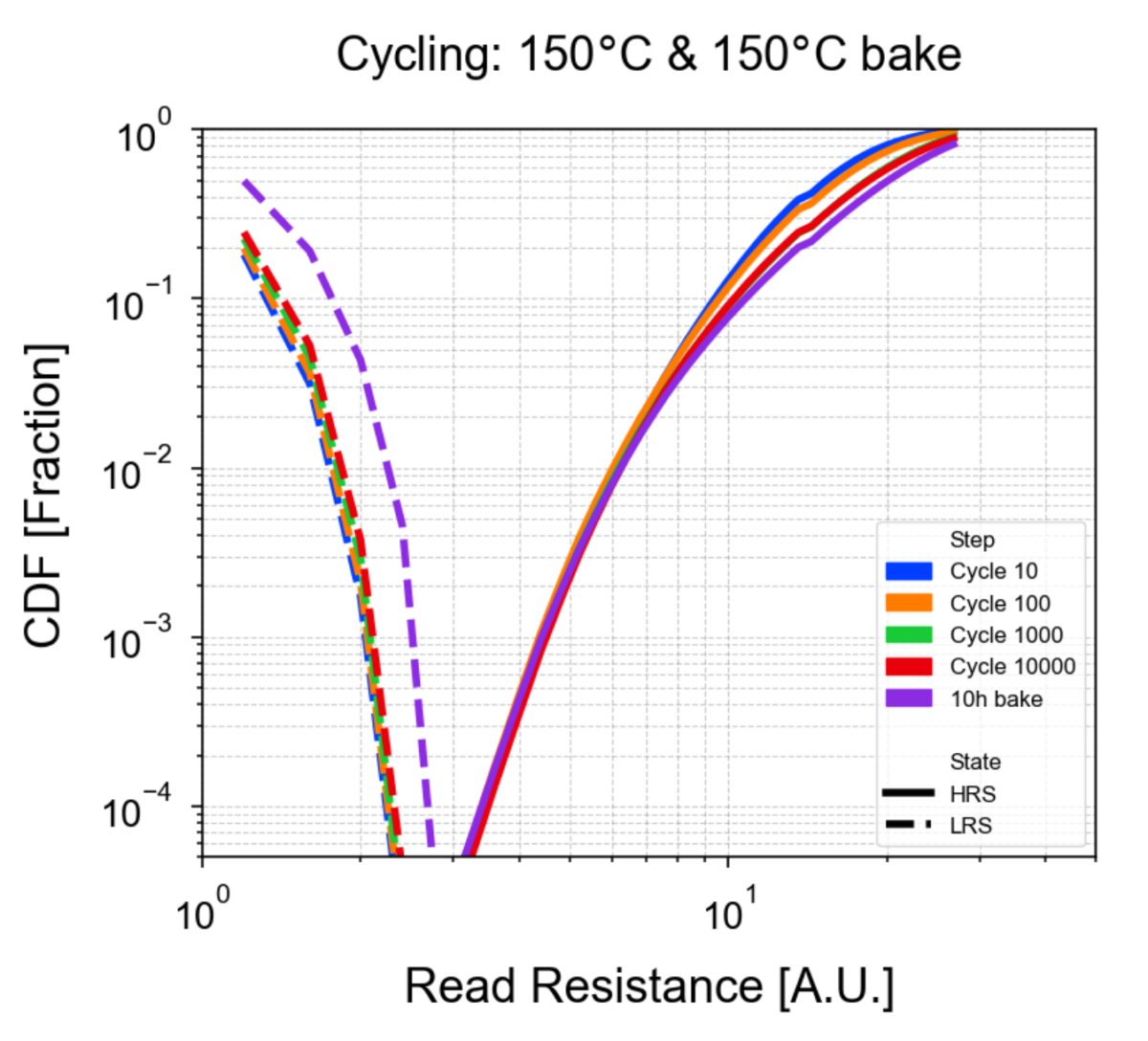
Image: Resistance distribution after 100K cycles at 150C. The Weebit performance demonstrates good BER throughout the entire 100K cycles at hot temperatures.
Coby Hanoch, Weebit Nano’s CEO commented, “The performance levels we’re achieving align with requirements specified by automotive companies. Demonstrating the resilience of Weebit ReRAM under these conditions will continue to enhance our position in this domain. Our latest results reaffirm the viability of Weebit ReRAM for use in microcontrollers and other automotive components, as well as numerous other applications requiring high-temperature reliability and extended endurance. Weebit ReRAM is ideal for these applications, offering advantages including ease of integration, cost effectiveness, power efficiency and tolerance to radiation and electromagnetic fields.”
You can read the full text of the announcement here.
A Closer Look at the Technology and the Challenges
According to the International Roadmap for Devices and Systems, 2022 Edition:
One challenge is the need of a new memory technology that combines the best features of current memories in a fabrication technology compatible with CMOS process flow and that can be scaled beyond the present limits of SRAM and FLASH.
Weebit Nano’s ReRAM technology offers a very cost-effective solution to this NVM need. Some specifics of the technology include:
- Two-mask adder
- Very few added steps compared to other NVM technologies
- Lower wafer cost than competing NVM technologies
- Fab-friendly materials
- No contamination risk, No special handling, etc.
- Using existing deposition techniques and tools
- Easy to integrate into any CMOS fab
- BEOL technology
- Stack between any two metal layers
- No interference with FEOL – Easier to embed with existing analog and RF circuits
- Easy to scale from one process variation to another
Some of the growing needs for emerging automotive NVM application include code storage, trimming and data logging. Weebit ReRAM delivers high-temperature reliability, immunity to EMI, endurance, fast switching speed, longevity, and secure operation. And the technology can scale to the most advanced process nodes.
Automotive chips have unique requirements, such as design for safety, security and longevity. Devices must be reliable against extreme temperatures, EMI, vibration, and humidity. Fast boot, instant response, frequent over-the-air updates must also be supported. All these requirements mean advanced process nodes are adopted quickly, and this is where Weebit Nano’s technology shows great promise.
General ICs are qualified according to JEDEC standards – this is the baseline for consumer application markets. The automotive industry follows AEC-Q100 standards (Stress Test Qualification for Integrated Circuits). For automotive qualified ICs, tests are much stricter than those of an industrial or commercial IC. These stringent qualification tests assure reliable operation and long lifetimes in harsh automotive environments.
This is why Weebit Nano’s advanced testing work is so significant for automotive applications. The technology is also relevant for a wider range of applications, as shown in the figure below.
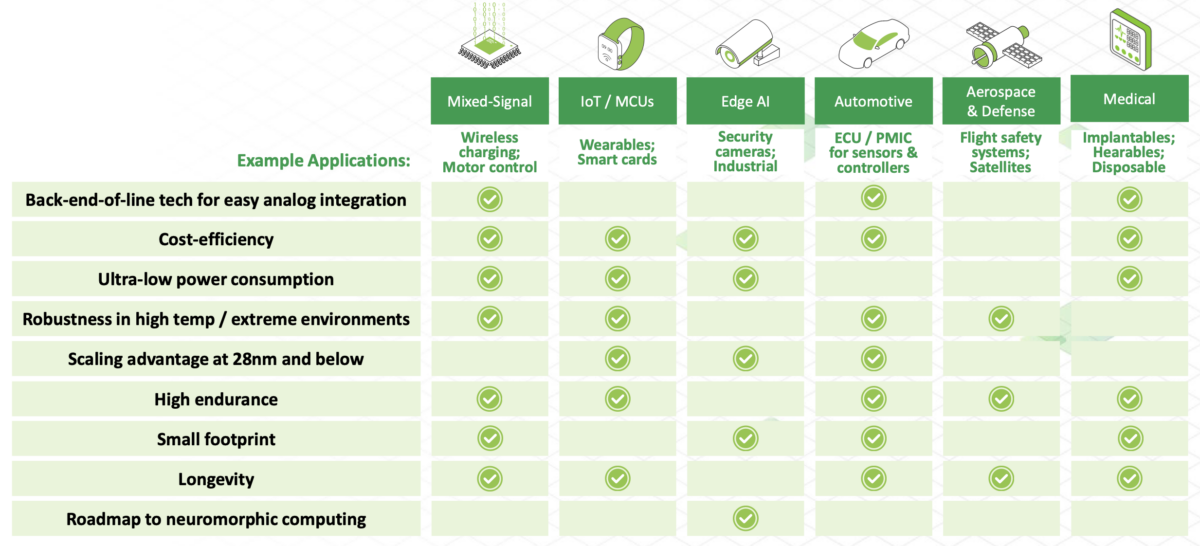
To Learn More
You can learn more about the benefits of ReRAM technology here. You can also learn about the application of Weebit Nano’s ReRAM to power management here. WeeBit Nano recently presented at the recent IEEE Electron Devices Technology and Manufacturing (IEEE EDTM) Conference. You can view this presentation here. And that’s how Weebit Nano brings ReRAM benefits to the automotive market.
Share this post via:
- SEO Powered Content & PR Distribution. Get Amplified Today.
- PlatoData.Network Vertical Generative Ai. Empower Yourself. Access Here.
- PlatoAiStream. Web3 Intelligence. Knowledge Amplified. Access Here.
- PlatoESG. Carbon, CleanTech, Energy, Environment, Solar, Waste Management. Access Here.
- PlatoHealth. Biotech and Clinical Trials Intelligence. Access Here.
- Source: https://semiwiki.com/automotive/343154-weebit-nano-brings-reram-benefits-to-the-automotive-market/
- :has
- :is
- :where
- $UP
- 100k
- 125
- 150
- 2022
- a
- About
- access
- According
- achieved
- achieving
- added
- addresses
- adopted
- advanced
- advantages
- Aerospace
- After
- against
- align
- All
- also
- an
- analog
- and
- announced
- Announcement
- any
- Application
- applications
- approach
- ARE
- around
- AS
- assure
- At
- automotive
- automotive industry
- bar
- Baseline
- BE
- been
- below
- benefits
- BEST
- between
- Beyond
- bits
- Block
- Brings
- broad
- Building
- by
- called
- CAN
- Celsius
- ceo
- challenge
- challenges
- charge
- Chips
- circuits
- clearly
- closer
- code
- combines
- commented
- commercial
- Companies
- company
- compared
- compatible
- competing
- components
- conditions
- Conference
- consumer
- continue
- Cost
- cost-effective
- critical
- Current
- cycles
- data
- delivered
- delivers
- demonstrated
- demonstrates
- demonstrating
- Design
- detailed
- Detailing
- details
- developed
- Devices
- diagram
- discrete
- distribution
- domain
- ease
- easier
- edition
- effectiveness
- efficiency
- Electronic
- embed
- embedded
- emerging
- enhance
- Entire
- environments
- etc
- existing
- extended
- extensive
- extreme
- factors
- FAST
- Features
- few
- Fields
- Figure
- Flash
- flow
- follows
- For
- form
- frequent
- from
- full
- good
- great
- Growing
- Handling
- Have
- High
- HOT
- How
- However
- HTTPS
- Hurdles
- ICS
- ideal
- IEEE
- image
- immunity
- in
- In other
- include
- Including
- industrial
- industry
- instant
- integrate
- integrated
- integration
- interference
- International
- into
- IP
- ITS
- Last
- Last Year
- latest
- LEARN
- levels
- lifetime
- like
- limits
- logging
- Long
- longevity
- Look
- Mainstream
- management
- manufacturing
- many
- Market
- Markets
- materials
- max-width
- mean
- Memories
- Memory
- metal
- Month
- more
- most
- Most Popular
- moves
- much
- must
- nano
- Need
- needs
- New
- no
- nodes
- November
- numerous
- of
- offering
- Offers
- on
- ONE
- opens
- operating
- operation
- or
- Other
- our
- part
- parts
- performance
- plato
- Plato Data Intelligence
- PlatoData
- plot
- Popular
- position
- Post
- power
- present
- presentation
- presented
- presents
- prevalent
- Problem
- process
- promise
- qualification
- qualified
- quickly
- Radiation
- raised
- range
- Read
- reaffirm
- recent
- recently
- relevant
- reliability
- reliable
- Requirements
- resilience
- Resistance
- response
- Results
- retention
- Risk
- roadmap
- Safety
- Scale
- scaled
- scaling
- secure
- security
- see
- shown
- Shows
- significant
- So
- solution
- some
- sometimes
- special
- specifically
- specifics
- specified
- speed
- Stability
- standards
- Steps
- storage
- stores
- stress
- stricter
- stringent
- such
- Supported
- Systems
- techniques
- Technologies
- Technology
- test
- Testing
- tests
- text
- than
- that
- The
- These
- things
- this
- those
- throughout
- to
- tolerance
- tools
- top
- traditionally
- two
- typical
- under
- unique
- until
- Updates
- use
- used
- using
- various
- very
- via
- viability
- vs
- was
- WELL
- why
- wider
- will
- with
- Work
- year
- you
- zephyrnet


